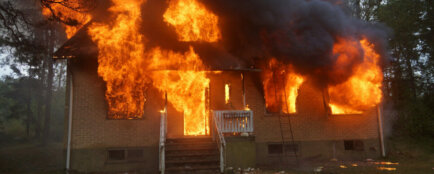Necessary defence as a circumstance precluding illegality
Necessary defence is one of the circumstances precluding unlawfulness. It is a circumstance which results in conduct which would otherwise be considered unlawful (e.g. criminal or misdemeanour conduct) not being considered unlawful in a given situation.
For example, imagine a situation where the driver of a car deliberately crashed into the window of a shop he was passing. Then we would certainly be talking about a misdemeanor or felony. However, if he had crashed into the shop window to avoid a child who had run around the corner at the last minute, then it would not be a criminal activity.
There are a total of five types of circumstances precluding illegality:
- extreme hardship,
- necessary defense,
- consent of the victim,
- permissible risk,
- justified use of the weapon.
Are you solving a similar problem?
Are you dealing with a situation related to necessary defense?
Describe your problem to us and we will prepare a legal analysis within 48 hours. We will prepare an offer of legal representation and we will fight hard in court to enforce your rights.
I want to help
- When you order, you know what you will get and how much it will cost.
- We handle everything online or in person at one of our 6 offices.
- We handle 8 out of 10 requests within 2 working days.
- We have specialists for every field of law.
Necessary defence and extreme urgency are among the most common circumstances excluding illegality that you may encounter. People often confuse these circumstances, but there are differences between them:
Necessary defence and extreme urgency: how do they differ?
Necessary defence is the justifiable use of force or other means of defence to protect oneself, another person or property from imminent unjustified attack. It is a response to an actual or imminent attack that is necessary and proportionate to repel the attack.
Extreme hardship, then, is a situation in which an act violates the law, but with the purpose of averting or lessening a danger to a person or property, in situations where that serious harm cannot be averted except by the very act violating the law.
The main difference, therefore, is that necessary defence responds to an attack (the active conduct of another person), whereas extreme emergency refers to danger in general. This danger may be caused, for example, by a natural phenomenon, a technical defect, human conduct that is not an attack, etc.
Example: Katherine broke Jaromir’s rib. It would be a necessary defence if the fracture occurred because Jaromir threatened her with a knife and she tried to kick it out of his hand. It would then be extreme hardship if, for example, they were having lunch together and Jaromir started choking. Katherine was giving him the Heimlich maneuver to free Jaromir’s airway, breaking his rib.
Tip for article
We have a separate article on the subject of extreme emergency. In it, you will find out what conditions must be met to constitute an extreme emergency.
Necessary defence – definition and conditions
As we have already announced, necessary defence consists in the use of violence to protect oneself, another person or property from an imminent unjustified attack. However, the law specifies this institute in more detail and lists the conditions that must be fulfilled in order for it to be a necessary defence.
Moreover, the institution of necessary defence is associated with many myths and ambiguities. Do I have to wait for the perpetrator to attack as part of my defence? Can I use a firearm if the attacker “only” has a knife? Will I be arrested if I cause the attacker’s death? So let’s take a look at what acting in necessary defense looks like in practice and what conditions must occur for the definition of necessary defense to be met:
An imminent or continuing attack
This means that there is an unlawful act by the attacker against which I subsequently defend myself, thereby causing some harm to the attacker. Importantly, the attack can only be imminent, so of course I do not have to wait for someone to attack me if they are facing me with a gun in their hand and threatening me. The point is that in the very near future such an attack may occur.
If we know that someone is planning one in a week’s time, we cannot justify our actions with necessary defense. Likewise if the attack has already been stopped. If, for example, the attacker is lying helpless on the ground and there is clearly no longer any danger from him, it is impermissible to attack him further.
The actions of an insane person or child may also constitute an attack. However, particularly in the case of children, it is appropriate to deal with the situation in a manner other than physical self-defence.
In the case of an animal, this will be an attack, for example, if the owner has set the animal against me. In such a case, the dog or other animal is essentially in the position of a tool of the attacker.
Threats to legally protected interests
This is an attack against health, property, liberty, dignity (or any other interest protected by criminal law). However, if it were, for example, the conduct of a police officer who, in the course of his duty, lawfully detained someone (and restrained their liberty), this is a permissible act that cannot be considered an attack against liberty. In such a case, the detainee’s defence could not be considered a necessary defence.
It is not an unreasonable defence
This is not to say, of course, that it should be entirely equivalent to an attack, i.e. that I may also respond to a stabbing only with a stabbing weapon. On the contrary. Such a legal requirement would be nonsensical for several reasons – firstly, I do not need to have an equivalent weapon on me at the time, secondly, when a hundred-pound man attacks a fifty-pound woman, they are probably not at risk of the same consequences when using the same weapons, and in general: the necessary defence should be able to repel the attack, i.e. it must actually be stronger than the attack itself.
Earlier case law (especially under the previous regime) defined the limits of permissible necessary defence quite narrowly. Therefore, since 1993, legislators have broadened this concept. The rejection of a completely manifest disproportionate defence is intended to prevent such excesses as someone using a firearm or a stabbing weapon against a fleeing convenience store thief, or the martial art of a karate fighter against children stealing apples. In such a case, it would be going beyond the bounds of necessary defense.
Tip for article
We have described the individual offences and the interests worthy of protection against which they are directed in a separate article.
But what if the attack isn’t directly against you? For example, you walk into a gas station where an assailant points a gun at the clerk. Are you allowed to intervene at that point? The law says that anyone is entitled to defend themselves, even someone who is not the target of the attack. In this case, therefore, it is not self-defence but so-called assistance in necessary defence, which the law wants to prevent irreparable damage to health or property.
However, you should be careful if you provoke the attack. You probably wouldn’t get away with teasing your buddy for an hour in a pub over a beer and then pleading self-defence when he slaps you around and you slap him back.
Necessary defence is also known in the Civil Code, which states that “whoever repels from himself or another an imminent or continuing unlawful attack and in doing so causes harm to the attacker is not obliged to compensate for it“.
Necessary defence – examples
Let’s explain the necessary defence with examples:
Mrs. Dvorak is walking down a deserted street in the evening when she notices an unknown man following her. The man starts to approach her and eventually pulls out a knife and threatens her. Fearing for her life, Ms. Dvorak pulls a pepper spray from her purse and uses it against the man to stop him so she can escape.
In this case, it is a necessary defence. Ms Dvořáková acted in necessary defence because she was facing an imminent attack on her life and health. Her use of the pepper spray was appropriate to the situation and her actions were justified because they were necessary to repel the attack.
Now imagine another situation where, on the other hand, there would be an unreasonable defense – Mrs. Dvorak is walking down a deserted street in the evening when she notices that an unknown man is following her. The man, however, is merely looking for a way to the bus stop and is not trying to harm her in any way. Mrs Dvořáková, believing that the man is planning an attack without any immediate threat, takes out a knife and attacks him. In doing so, she causes him serious injury.
In this case, therefore, it will not be a case of necessary defence, but a criminal offence. The attack was neither imminent nor continuous. Mrs Dvořáková reacted disproportionately and without a well-founded threat, thereby breaking the law. Her actions were disproportionate and unjustified and therefore constitute a criminal offence.
Summary
Necessary defence is a key legal institute that allows one to act unlawfully to protect oneself, others or property against imminent unjustified attack without such action being considered a criminal offence. It is important that the defence is proportionate and appropriate to the threat it is directed against.




